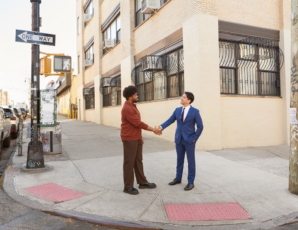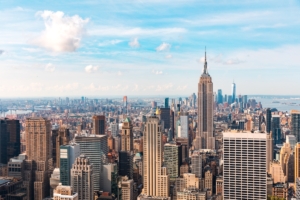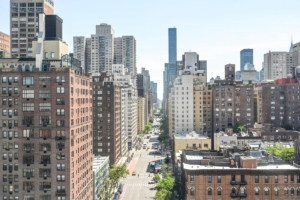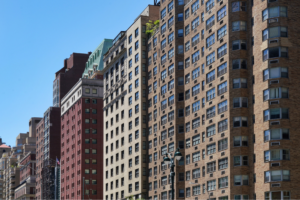Rentals in Midwood Spent Only 11 Days on the Market; Rental Units Languished in Midtown South and Downtown Brooklyn
The NYC rental market stayed competitive as August came to a close, particularly in Brooklyn where asking rents hit their highest level of the season and rentals spent as little as 11 days on the market in some neighborhoods. According to the latest StreetEasy Market Reports for Manhattan and Brooklyn, the median asking rent in Manhattan grew 3.3 percent over the last year to $3,460 in August. Annual rent price growth was strongest among one-bedroom units in Manhattan, which grew 3.7 percent to $3,370. Price growth among studios and units larger than one bedroom were either negative or stagnant from last year.
In Brooklyn, the median asking rent grew 4 percent from last year to $2,650 in August. Unlike Manhattan, the strongest annual rent price growth was among larger units. The monthly median asking rent for two-bedroom units grew 2 percent from last year to $2,550 in August. For units greater than two bedrooms (i.e., 3+ bedrooms), median asking rent grew by 6.7 percent from last year to $3,200.
Rental units that were rented in August typically spent 21 days on the market in Manhattan and 18 days in Brooklyn. Of all Manhattan and Brooklyn neighborhoods tracked in StreetEasy’s report, the most competitive rental markets in August, as measured by median days on market, were in Brooklyn: Midwood rentals spent a median of 11 days on the market and Prospect Park South rentals spent 13 days. In Manhattan, Little Italy, Sutton Place and Upper East Side tied with the fastest time on market, where rentals spent a median of 14 days on the market before finding a tenant.
By comparison, rental units in Midtown South and Downtown Brooklyn languished on the market for a median time of 48 days and 30 days, respectively. In both markets, rental units tend to be higher-priced luxury units, which may account for the additional time necessary to rent them out. In Midtown South, for example, the median asking rent in August ($3,850) was 11.6 percent above the Manhattan median. In Downtown Brooklyn, the median asking rent in August ($3,300) was 24.5 percent above the Brooklyn median.
[tableau server=”public.tableausoftware.com” workbook=”August2015MarketOverview” view=”August2015″ tabs=”no” toolbar=”” revert=”” refresh=”” linktarget=”” width=”600px” height=”850px”]
Upper Manhattan Outperforms All Other Manhattan and Brooklyn Areas in Annual Resale Price Growth
The median resale price of all homes in Manhattan grew 6.7 percent from last year to $986,314, according to StreetEasy’s Manhattan Price Index. August was the 19th consecutive month of slowing annual resale price growth in Manhattan as prices continue to climb, albeit at a much slower rate compared to 2014. Although the median resale price of all homes in the Upper Manhattan submarket was the lowest ($579,147) among the five major submarkets in Manhattan, it grew by more than twice the Manhattan pace in the last year (13.5 percent). Median resale price growth in the Upper West Side submarket also outperformed the rest of Manhattan, rising 10.5 percent from last year to $1.14 million in August.
The median resale price of all homes in Brooklyn grew 7.2 percent from last year to $538,563, according to StreetEasy’s Brooklyn Price Index. The area that saw the highest growth in August was Northwest Brooklyn, where the median resale price of all homes climbed 11.0 percent to $891,278, the highest price among the borough’s five major submarkets. Prospect Park was not far behind, posting 10.7 percent annual growth to a median price of $813,105 in August.
Prospect Park, North Brooklyn, and Upper Manhattan Were Among the Most Competitive Areas in August
Manhattan and Brooklyn homes that sold in August typically did so for 100 percent of sellers’ initial asking price, a sign that competition remains tight among buyers in both boroughs. Bidding wars were the most prevalent in the Prospect Park, North Brooklyn, and Upper Manhattan submarkets where the typical home sold for much more than the home’s initial asking price. The Prospect Park submarket in Brooklyn remained the most competitive area in Manhattan and Brooklyn; homes that sold there in August typically did so for 5 percent above the sellers’ initial asking price. In Upper Manhattan, homes that sold in August typically did so for 0.9 percent above initial asking price, a sign that the lower price point in neighborhoods such as Central Harlem, Washington Heights, and Inwood are attracting greater interest among buyers.
[tableau server=”public.tableausoftware.com” workbook=”priceIndices” view=”StreetEasyPriceIndex” tabs=”no” toolbar=”” revert=”” refresh=”” linktarget=”” width=”600px” height=”650px”]
August Inventory in Manhattan and Brooklyn Falls Further than Anticipated
Home buying and selling activity slowed to a crawl during the peak summer month as inventory across Manhattan and Brooklyn saw a decline that was much larger than expected. The total number of Manhattan homes available for sale in August fell 16.4 percent in a single month to 7,035, a level that was 21.1 percent below last August’s stock. Brooklyn inventory fell sharply as well, finishing the month 8.3 percent below last year’s level. In Manhattan, the inventory decline was the greatest in the Upper Manhattan submarket, where the number of homes available for sale fell 29.9 percent from last year. In Brooklyn, the inventory decline was the greatest in the Prospect Park submarket, where the number of homes for sale fell 8.3 percent from last year. This year’s decline was well beyond historical precedent. The average August inventory decline over the previous five years was 7 percent in Manhattan and 4.8 percent in Brooklyn.
Not all neighborhoods experienced a decline in inventory, however. Williamsburg experienced a significant addition to the number of units available, posting 33.2 percent annual growth in August. Other Brooklyn neighborhoods that experienced strong annual growth include DUMBO (26.5 percent), Brighton Beach (26.2 percent), Bedford-Stuyvesant (18.0 percent), and Carroll Gardens (16.3 percent). Only five Manhattan neighborhoods saw annual inventory growth: Roosevelt Island (20 percent), Battery Park City (10.2 percent), Turtle Bay (4.3 percent), Central Park South (2.5 percent), and Midtown (1 percent).









